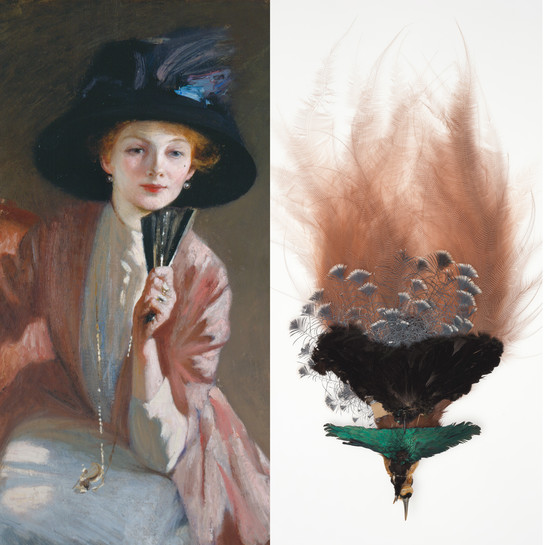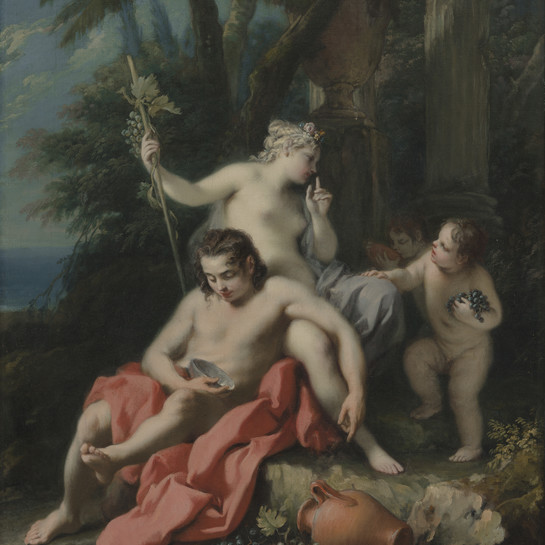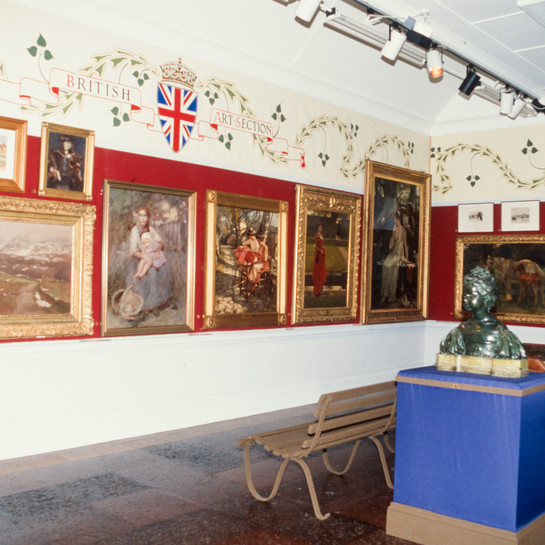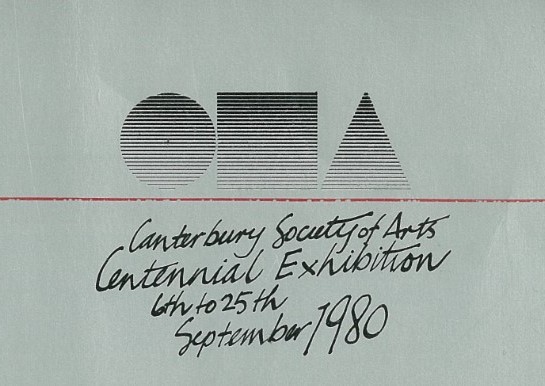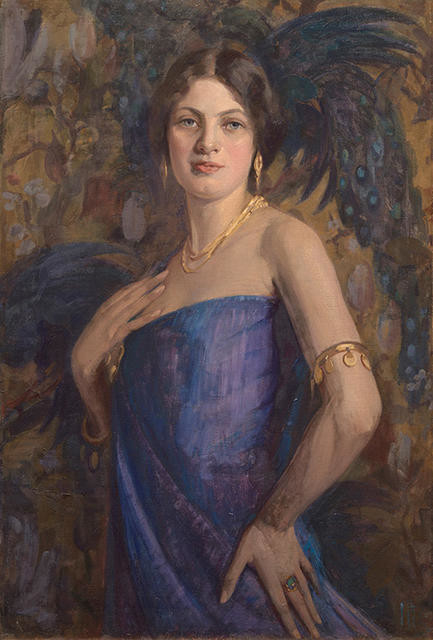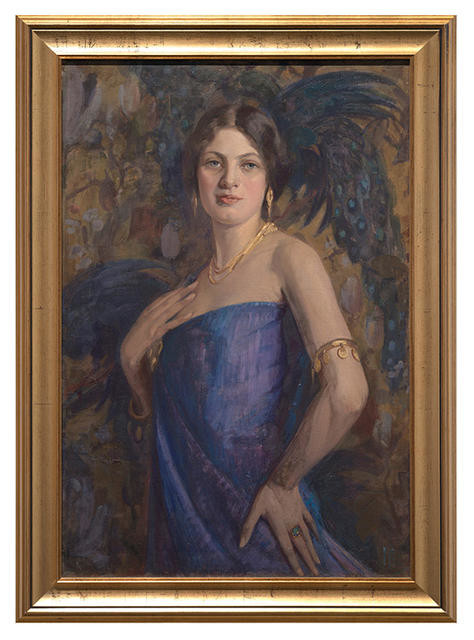Mary Tripe
Aotearoa New Zealand, b.1870, d.1939
Peacocks
- 1926
- Oil on canvas
- Presented to the Canterbury Society of Arts by J. J. Thomson, 1929; given to the Gallery, 1932
- 950 x 690mm
- 69/210
Tags: animals, birds (animals), blue (color), bracelets (jewelry), brooches, dresses (garments), earrings (jewelry), jewelry, necklaces, people (agents), portraits, rings (jewelry), women (female humans)
Mary Elizabeth Richardson Tripe established a successful career as a leading portrait painter in New Zealand and received many commissions, particularly among Wellington’s upper-middle class. Her academic training under the English portrait painter Frederick Whiting (1874 -1962) is evident in the formal treatment of the sitter. However, this is off-set by loose, colourful brushwork in the background. Tripe put strong emphasis on costume and accessories, such as the highly coloured peacock feathers, giving a sense of liveliness and vibrancy to what would otherwise be an Academic portrait study. Born Mary Elizabeth Richardson in Christchurch, Tripe moved to Wellington with her family in 1886. She attended the Wellington School of Design. Tripe was an original member of the Wellington Art Club. She married J.A. Tripe in 1900 and together they made many visits to Europe, making London their base. Tripe exhibited with Art Societies throughout New Zealand as well as with the Royal Society of Portrait Painters, The Royal Academy and the Paris Salon.
Exhibition History
Mary Tripe, the painter of this work was born at Christchurch and studied at Canterbury College School of Art in the studio of Petrus van der Velden and at the Wellington School of Design under Arthur Riley. After gaining her Art Masters Diploma she taught at the school during the 1890s.
Following her marriage to J. H. Tripe in 1900 she spent the remainder of her life as a painter in Wellington but made several visits overseas, the first being in 1913.
Tripe’s interest in formal studio portraiture was strong and in Wellington she developed a following for society type portraits which was akin to her younger contemporary A. Elizabeth Kelly in Christchurch.
However, unlike Elizabeth Kelly, Tripe placed greater emphasis on costume and accessories particularly on a decorative background. This aspect is evident in Peacocks first exhibited in 1927 at the Canterbury Society of Arts.
Tripe exhibited widely in New Zealand during her lifetime and also overseas at the Paris Salon, Royal Society of Portrait Painters, and also at the Royal Academy London in 1934.
This painting was purchased by Mr J. J. Thomson in 1927.
